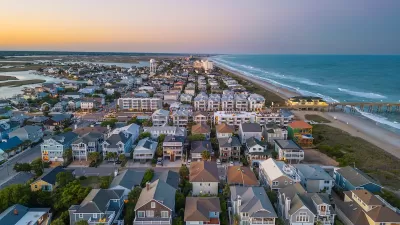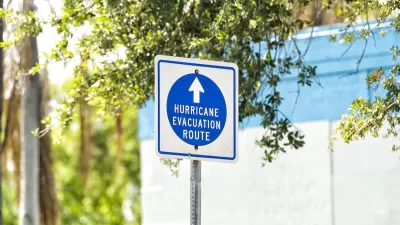The heavy rain brought by a rare West Coast hurricane could have long-lasting impacts on this iconic American landscape.

After Hurricane Hilary dropped two inches of rain in California’s Death Valley National Park, officials assessing the damage to park infrastructure and roads say it could be months before the park is fully accessible to visitors again—and the desert landscape could be changed forever. A majority of park roads remain closed, in many cases completely washed out by powerful torrents.
According to a Los Angeles Times article by Ryan Fonseca, “Officials told [L.A. Times reporter Hayley Smith] that some scorpions and lizards didn’t survive the flooding, but endangered pupfish appeared to make it through. Then there are the Bristlecone pines — some of the oldest known trees on Earth. The roadways up to the ancient forest are blocked by debris, so officials don’t yet know whether they survived the rain, wind and erosion.”
Now, officials will likely reinforce infrastructure as it gets rebuilt to prepare for future weather events that could become more intense due to climate change. “Climate models do seem to indicate that we will see more intense storms along with the higher temperatures,” said park ranger Matthew Lamar.
FULL STORY: How Hilary’s visit to Death Valley National Park reshaped the desert landscape

Planetizen Federal Action Tracker
A weekly monitor of how Trump’s orders and actions are impacting planners and planning in America.

Maui's Vacation Rental Debate Turns Ugly
Verbal attacks, misinformation campaigns and fistfights plague a high-stakes debate to convert thousands of vacation rentals into long-term housing.

Restaurant Patios Were a Pandemic Win — Why Were They so Hard to Keep?
Social distancing requirements and changes in travel patterns prompted cities to pilot new uses for street and sidewalk space. Then it got complicated.

In California Battle of Housing vs. Environment, Housing Just Won
A new state law significantly limits the power of CEQA, an environmental review law that served as a powerful tool for blocking new development.

Boulder Eliminates Parking Minimums Citywide
Officials estimate the cost of building a single underground parking space at up to $100,000.

Orange County, Florida Adopts Largest US “Sprawl Repair” Code
The ‘Orange Code’ seeks to rectify decades of sprawl-inducing, car-oriented development.
Urban Design for Planners 1: Software Tools
This six-course series explores essential urban design concepts using open source software and equips planners with the tools they need to participate fully in the urban design process.
Planning for Universal Design
Learn the tools for implementing Universal Design in planning regulations.
Heyer Gruel & Associates PA
JM Goldson LLC
Custer County Colorado
City of Camden Redevelopment Agency
City of Astoria
Transportation Research & Education Center (TREC) at Portland State University
Jefferson Parish Government
Camden Redevelopment Agency
City of Claremont





























